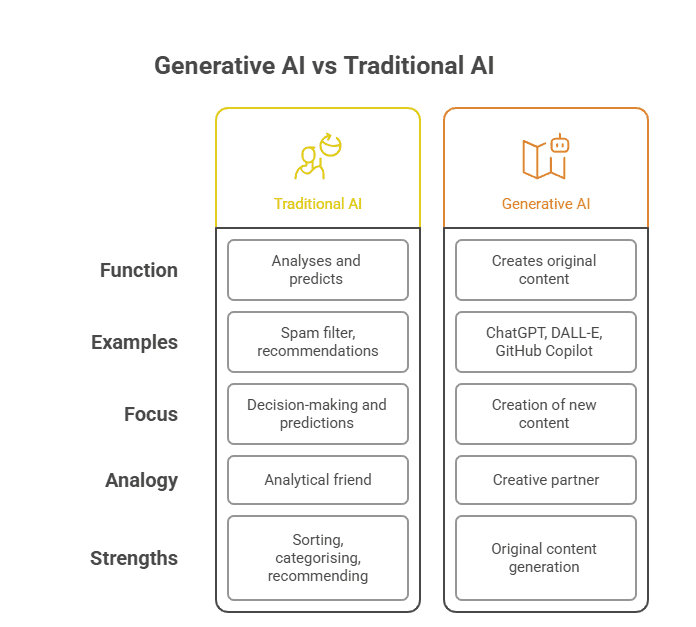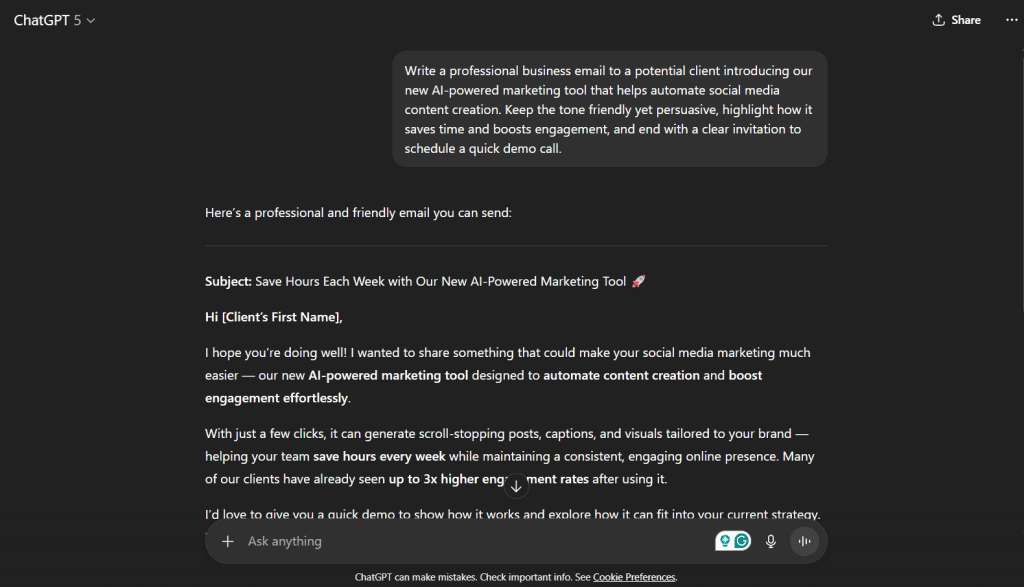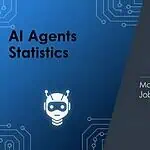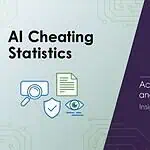You’ve probably noticed AI-generated images flooding your social feeds. Or maybe you’ve caught yourself using ChatGPT to draft a work email. Here’s the thing: generative AI isn’t just a tech trend anymore.
According to Netguru’s 2025 research, 78% of organisations now use AI in at least one business function, and generative AI attracted $33.90 billion in investment. That’s an 18.7% jump from 2023.
These tools are reshaping how we work, create, and solve problems. But what actually is generative AI? And how does it differ from the AI we’ve been hearing about for years? Let’s break it down in plain English.
What Is Generative AI?
Generative AI is a type of artificial intelligence that creates new content. It can produce text, images, videos, audio, or even code. The technology learns patterns from massive amounts of existing data. Then it uses those patterns to generate something entirely new.
Think of it like a chef who’s tasted thousands of dishes. They understand flavour combinations, cooking techniques, and ingredient pairings. When asked to create something new, they don’t just copy a recipe. They combine what they’ve learned to make an original dish. Generative AI works the same way.
The AI studies countless examples. A text generator reads millions of articles and books. An image generator analyses millions of photos and artworks. It spots patterns in how words connect or how visual elements come together. When you give it a prompt, it creates something new based on those learned patterns.
What makes this different from simply copying? The AI generates content that didn’t exist before. It’s not pulling from a database of pre-written responses. It’s created in the moment.
Generative AI vs Traditional AI
You might think all AI does the same thing. But traditional AI and generative AI solve completely different problems.
Traditional AI analyses and predicts. Your email’s spam filter? That’s traditional AI examining incoming messages and deciding which ones are junk. Netflix recommendations? Traditional AI looks at your viewing history and predicts what you’ll like next. A fraud detection system? Traditional AI spots suspicious patterns in transaction data.
Generative AI creates. ChatGPT writes that email for you. DALL-E generates an image from your description. GitHub Copilot suggests code as you type. Futurense explains that traditional AI processes data to make decisions and predictions, while generative AI focuses on creation.
Here’s a simple way to remember it: traditional AI is your analytical friend who helps you make choices. Generative AI is your creative partner who helps you build something new.
Both types are powerful. But they serve different needs. Traditional AI excels at sorting, categorising, and recommending. Generative AI shines when you need original content, whether that’s a blog post, a product design, or a customer service response.

How Does Generative AI Work?
You might wonder what’s actually happening inside these AI systems when they generate content. It’s actually simpler than you’d think. No need to get into complex math or technical jargon here.
Think of it this way: generative AI works by learning patterns from massive amounts of data, then using those patterns to predict what should come next.

Training Data and Pattern Recognition
Generative AI learns the same way you’d learn a new language by reading thousands of books.
The AI gets fed enormous amounts of data. We’re talking millions of images, billions of words, or countless hours of audio. It scans through all this information looking for patterns. What words tend to appear together? What shapes make up a human face? What notes create a melody?
Here’s the thing: both the quantity and quality of this training data matter. The model needs diverse, high-quality examples to learn from. If you trained an AI only on mystery novels, it wouldn’t know how to write a romance. The more varied and accurate the training data, the better the AI becomes at recognising relationships and making predictions.
The AI doesn’t memorise this data. Instead, it builds a kind of internal map of relationships. It learns that “cat” often appears near “meow” or “whiskers.” It recognises that portraits usually have eyes positioned a certain distance apart. These connections form the foundation for everything the AI will create later.
The Prediction Process
Once trained, the AI creates new content through educated guessing.
You know how your phone’s autocomplete suggests the next word as you type? Generative AI works similarly, just way more sophisticated. When you give it a prompt, it predicts what should come next based on all those patterns it learned.
Let’s say you ask it to write about coffee. The AI calculates probabilities. What word is most likely to follow “coffee”? Maybe “beans” or “cup” or “morning.” It picks one based on probability, then repeats the process for the next word, and the next.
What you need to understand is this: the AI isn’t thinking or understanding meaning. It’s recognising patterns and playing the odds. It doesn’t know what coffee tastes like or why people drink it. It just knows that certain words, phrases, and concepts tend to cluster together in the data it studied. That’s exactly why sometimes AI outputs sound convincing but miss the mark on deeper meaning.
Types of Generative AI Models
So generative AI can create content. But how does it actually pull that off? Here’s the thing: there are different approaches to generation. Think of it like cooking, you can bake, fry, or grill to create a meal. The end result is food, but the process differs. In generative AI, two main approaches dominate: autoregressive models and diffusion models. Let’s break down what makes each one tick.

Autoregressive Models
These models work like you’re writing a text message. You type one word. Then the next. Then another. Each word you choose depends on what you’ve already written.
That’s exactly how autoregressive models generate content. They create one piece at a time, in sequence. Each new piece relies on everything that came before it. If you’re generating text, the model predicts the next word based on all the previous words. Then it uses that new word to predict the one after. And so on.
This is how ChatGPT works when you ask it a question. It doesn’t write your entire answer at once. It builds it word by word, making sure each word fits naturally with what it’s already said. The same approach works for code generation and even some music creation. The key here is that sequential flow. The model can’t skip ahead. It has to move step by step, building as it goes.
Diffusion Models
Now picture this: you’re looking at a photo covered in static. Then the static slowly clears. Details emerge. Colours sharpen. Eventually, you see a crisp, clear image.
That’s how diffusion models work. They start with pure noise. Random pixels that look like TV static. Then they gradually clean it up. Step by step, they remove the noise and add structure. The fuzzy mess becomes shapes. The shapes become details. The details become a finished image.
Think of it like a sculptor working with clay. They don’t start with a perfect statue. They begin with a rough blob and refine it. Each pass adds more definition. More detail. More clarity. That’s what the model does, except it’s removing randomness instead of chipping away clay.
This approach is huge in image generation. Tools like DALL-E and Midjourney use variations of this process. You give them a prompt, and they transform noise into something that matches what you described. The whole process happens in reverse from how we usually think about creation. Instead of building up from nothing, they clean up from chaos.
What Can Generative AI Create?
Think about the last time you saw an AI-generated image or used a chatbot. That’s generative AI at work. These systems can produce everything from simple text messages to full-length videos. Let’s break down the main types of content you’ll encounter.
Text Generation
This is probably the type you’ve interacted with most. Text-generating AI can write chatbot responses, draft emails, create articles, and even generate code. ChatGPT is the most recognisable example. People use it daily to brainstorm ideas, write job descriptions, debug programming errors, or translate languages.

What makes text generation powerful is its flexibility. You can ask for the same content in different tones. Need a formal business email? Done. Want that same message as a casual text? It can do that too. The AI adjusts its style based on what you ask for. This is why customer service bots can sound friendly while legal document generators maintain a professional tone.
Image Creation
Type a description, get an image. That’s the basic idea behind tools like DALL-E, Midjourney, and Nano Banana. You might ask for “a cat wearing a spacesuit on Mars,” and within seconds, you’ve got a unique image that matches your prompt.

Businesses use these tools to create product mockups before manufacturing anything. Marketers generate dozens of social media visuals in the time it would take a designer to create one. Artists experiment with styles they couldn’t physically produce. A process that once took hours or days now happens in under a minute.
The quality has improved dramatically too. Early AI images looked obviously artificial. Now, some are hard to distinguish from photographs or professional illustrations. You’ve probably scrolled past AI-generated images online without realising it.
Video Generation
Video is the newest frontier and also the most complex. Current tools can create short animations, edit existing footage, or generate simple video clips from text descriptions. The technology is still developing, so you won’t see feature-length films yet.
Right now, you’ll find AI-generated videos in explainer content, social media ads, and educational materials. Some tools can animate still images or change elements in existing videos. Others create entirely new footage from scratch. It’s slower and more resource-intensive than image generation, but it’s getting better fast.
Audio and Voice Generation
From music tracks to podcast voiceovers, AI can handle audio creation too. You’ve likely heard AI-generated voices in navigation apps, automated phone systems, or even audiobooks. Some systems can clone specific voices with just a few minutes of sample audio.
Musicians use AI to compose background tracks or experiment with new sounds. Content creators generate voiceovers without recording studios. Sound designers create custom sound effects for games or videos. The technology serves both creative exploration and practical business needs.
Some voice generators let you adjust emotion and emphasis. You’re not stuck with a monotone robot voice anymore. The AI can sound excited, concerned, or professional based on your needs.
Common Uses of Generative AI
You’ve probably already interacted with generative AI today without realising it. That chatbot that answered your question on a website? Generative AI. The email draft your work software suggested? Same thing.
Marketing teams use it to pump out blog posts, social media captions, and ad copy in minutes instead of hours. Customer service departments rely on AI chatbots to handle basic questions so human agents can tackle the complex stuff. 54% of employees use ChatGPT or other generative AI tools at work, and 21% of organisations using this technology have completely redesigned their workflows around it.
Developers lean on tools like GitHub Copilot to write code faster. Teachers create personalised lesson plans and practice quizzes tailored to individual students. Product designers generate prototypes and mockups before investing in physical materials.
The creative industries are all over it too. Musicians use AI to experiment with melodies and arrangements. Writers use it to break through writer’s block or outline articles. Graphic designers generate concept art to show clients before committing to final designs.
What connects all these uses is speed and accessibility. Tasks that used to require specialised skills or hours of work now take minutes. You don’t need to be a graphic designer to create a decent logo concept. You don’t need to be a programmer to write basic code. That’s the real shift generative AI brings to the table.
Benefits and Drawbacks
Let’s be straight about what generative AI can and can’t do for you.
The speed advantage is real. You can generate a first draft, a design concept, or lines of code in seconds. That’s not hype. It’s genuinely faster than doing everything from scratch. Plus, it’s cheaper than hiring specialists for every task, especially for small businesses or individuals who can’t afford a full creative team.
The accessibility factor matters too. You can now create professional-looking content without years of training. Need a presentation graphic? Generate it. Need to translate customer emails? Done. The barrier to entry for creative and technical work has dropped significantly.
But here’s where you need to pump the brakes. Generative AI makes mistakes. Often. It generates information that sounds confident but is completely wrong. McKinsey’s 2025 survey found that inaccuracy is the AI-related risk organisations most often experience. That’s not a minor issue when you’re making business decisions or publishing content.
The quality swings wildly. Sometimes it nails exactly what you need. Other times it’s generic, repetitive, or just off. You can’t predict which you’ll get.
What you’re working with isn’t true understanding. These models match patterns they’ve seen before. They don’t think through problems or grasp context the way humans do. They’re sophisticated autocomplete, not creative partners.
Then there are the ethical questions nobody’s fully answered yet. Who owns the copyright when AI generates an image trained on thousands of artists’ work? What happens when anyone can create deepfake videos? How do we handle job displacement in industries being automated?
The technology is powerful and useful. But it’s a tool that requires oversight, fact-checking, and human judgment. You can’t just plug it in and walk away expecting perfection.
A startup consultant, digital marketer, traveller, and philomath. Aashish has worked with over 20 startups and successfully helped them ideate, raise money, and succeed. When not working, he can be found hiking, camping, and stargazing.









